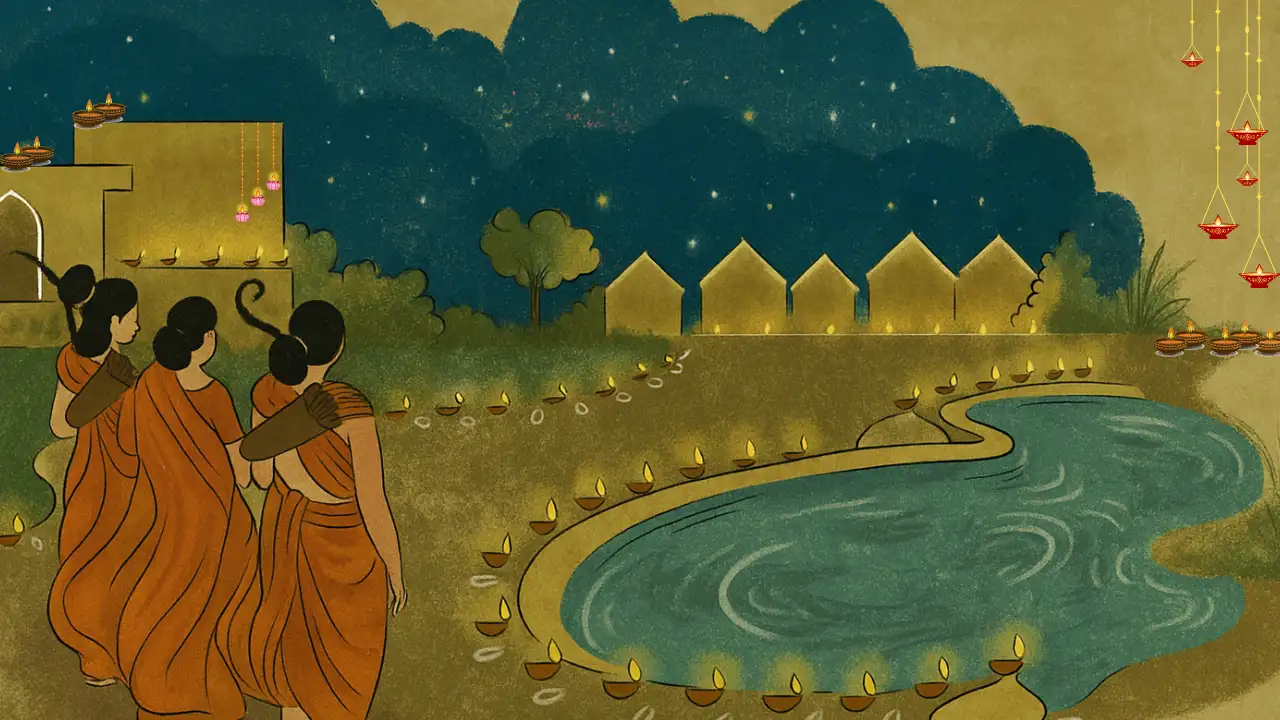By Ishita Roy
Copyright timesnownews

NOTE: The stories shared in this article are based on popular and conventional beliefs, and legends. Times Now does not authenticate these narratives and does not intend to hurt or offend anyone’s sentiments. The epic that inspired the festival Diwali, Ramayana, tells us that it is a festival that celebrates the return of Lord Rama’s after a 14-year-long vanvaas (exiled into the forest). Ever since, Ramayana, originally written in Sanskrit has been translated in many languages, told and retold, and also performed. Mughal emperor Akbar translated Ramayana into Persian so he could learn from the Hindu epic, and the paintings depict how upon freeing Sita and returning home, the people of Ayodhya left earthen pots on their doorsteps to help Rama and Sita find their way. These lights also became a symbol of Diwali and the celebration of light to overcome darkness. However, in such a vast country like India, one festival has different meanings. This is also the case for Diwali. Worshipping Goddess Lakshmi And Lord Ganesh While the day marks the return of Lord Rama, in north India, Goddess Lakshmi and Lord Ganesha are worshipped. This is because as per the Yuga Cycle, which has four yugas or ages, in Satyug, one major event that happened was Samudra Manthan, which means Churning of the Ocean in search of Amruta. This was also the same day of Kartik Amavasya (New moon), when Goddess Lakshmi emerged from the churning, and so Diwali is symbolised with Lakshmi Puja. With her, Lord Ganesh is worshipped as he is the ‘distributor of wealth’ who must be worshipped with the ‘goddess of wealth’. As per Hindu mythology, it is believed that Lord Ganesh told Goddess Lakshmi to bless anyone whose name he mentioned, thus they are worshipped together. What Diwali Means As Per Mahabharata While in Ramayana it is marked as an event of return from the 14-year-long vanvas, in Mahabharata, the same event is celebrated again as a return, but not of Lord Rama, but of the Pandava brothers. It is believed that after years of innumerable hardships, the brothers and their wife return to their kingdom on the moonless night of Kartika Amavasya, where people lit earthen lamps to welcome them. As per Mahabharata, Diwali reflects the timeless wisdom and heroic deeds of Lord Krishna. His guidance to Arjuna during the battle of Kurukshetra highlights the importance of standing by truth and righteousness, even amid daunting challenges and moral dilemmas. The festival serves as a reminder of Krishna’s enduring teachings, inspiring us to uphold dharma and justice, and to walk the path of integrity and virtue. Diwali In Jainism Is About Enlightenment Jain scriptures refer to Diwali as Dipalikaya, which means ‘light leaving the body’. This marks the day when Lord Mahavira, the 24th Jain Tirthankara attained nirvana or had his spiritual awakening. To mark such an important day, earth and heavens were lit up with lamps. In Jainism, Diwali finds its earliest mention in the Harivamsha Purana written by Acharya Jinasena in the 8th century CE, where it was called Dipalika. Since then, Jains have celebrated Diwali to honor Lord Mahavir and his attainment of nirvana. For the Jain community, Diwali is a time to pay tribute to Mahavir’s teachings. The Swetambara sect observes fasting during the three days of the festival, while devotees gather to chant hymns and recite verses from the Uttaradhyayan Sutra, which contains the final sermons of Lord Mahavir, reminding all of the path to spiritual liberation. Interestingly, the day following Diwali also marks the beginning of the Jain New Year. It commemorates the nirvana (liberation) of Lord Mahavir, ushering in a new era known as the Vira Nirvana Samvat or Vira Samvat, symbolizing spiritual renewal and enlightenment. Diwali: A Day Of Freedom In Sikhism Even though in every culture, the celebration differs, the message stays the same, moving towards the light from darkness. In a similar manner, in Sikhism, the festival is celebrated as Bandi Chorh Diwas or the Day of Liberation. This is the day notes Sikhism: A Guide for the Perplexed, when Guru Hargobind Sahib and 52 other prisoners were released from captivity. Persian records, such as Dabestan-e Mazahab also suggests that he was kept in jail for 12 years. The reason for such a long captivity was because the Guru had declared that he would not leave unless 52 others were also released. Upon this, the emperor said, that those who will be able to hold on to Guru’s cloak would be allowed to leave. As a result of this, the Guru made a cloak with 52 pieces of strings so everyone could hold on to it and walk out of the prison. The Guru’s liberation was celebrated with lighting lamps. Diwali Is The Day Bengalis Worship Goddess Kali Read: Delhi’s Oldest Kalibari: Why Bengalis Worship Goddess Kali On Diwali? Legend has it that in the 16th century, a Bengali saint and a Tantric scholar Krishnananda Agamvagisha had a dream. In his dream goddess Kali instructed him to worship her in this form on the new moon day called Dipannita Amavasya of the Hindu month of Kartik. While the Puja was started in the 17th century, however, it reached the masses and became a widespread yearly festival in the 19th century. This happened when Kali devotee Sri Ramakrishna Paramahangsha became a popular religious leader among the communities and influenced many Bengali landowners to patronise the goddess. This soon became the second major festival of the Bengali community after Durga Puja. Thus each year Goddess Kali is worshipped on Diwali. Kali Puja is celebrated during the new moon period, which means it is celebrated at night.